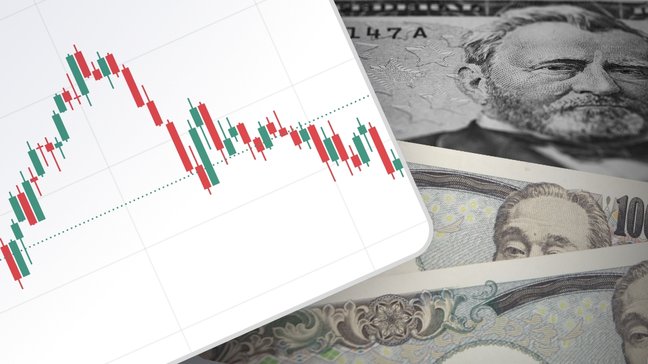Forex market traders are juggling with mixed signals early Tuesday as geopolitical fears and pre-data anxiety join economic optimism, as well as hopes of witnessing softer rates from the key central banks.
Amid these plays, the US Dollar Index (DXY) remains dicey around 103.50-55 while the US 10-year and 30-year Treasury bond yields drop to the lowest level in two weeks. Further, the Wall Street benchmarks closed in positive territory but the Asia-Pacific equities edged lower.
It’s worth noting, however, that the EURUSD and GBPUSD fail to cheer the US Dollar’s retreat while USDJPY manages to keep the sellers on board, after welcoming them the previous day. That said, AUDUSD and NZDUSD hold lower grounds amid mixed signals from China and downbeat catalysts at home but USDCAD prints a four-day losing streak even as Crude oil pares recent gains.
Further, Gold Price jostles with the key upside hurdle during a two-day rebound while Oil drops for the second consecutive day as market players reassess tensions in the Middle East.
Elsewhere, BTCUSD and ETHUSD refresh weekly tops amid fresh optimism in the crypto market due to a sharp fall in the exchange supplies of Bitcoin and Ethereum.
Following are the latest moves of the key assets:
- Brent oil extends the previous day’s pullback from a two-month high toward $82.00, down 0.25% intraday at the latest.
- Gold price rises for the second consecutive day to $2,038 by the press time.
- USD Index hovers at a six-week high, remaining indecisive near 103.50 as we write.
- Wall Street closed with gains but the Asia-Pacific stocks drifted lower. That said, equities in the UK and Europe print minor upside during the initial hour.
- BTCUSD stays mildly bid at a two-week high of near $43,000 while ETHUSD posts minor losses near $2,310 at the latest.
US Dollar braces for key data/events…
The US Dollar began the key week on a back foot as yields dropped and the sentiment improved. The chatters about US President Joe Biden will authorize military action in the Middle East spread the market fears and put a floor under the US Dollar. However, downbeat yields and the risk-positive headlines from China allowed the gold buyers to pare recent losses, especially amid firmer equities and traders’ preparations for this week’s FOMC, as well as the US NFP.
The US Treasury bond yields dropped on Monday after the Treasury Department unveiled its plans to borrow $760 billion this quarter, down from its $816 billion estimate in October. The news bolstered the market’s sentiment about the US economic growth and tax receipts, which in turn weighed on the US Dollar’s haven demand.
Further, the average salaries in 38 Chinese cities fell 1.3% YoY during the fourth quarter (Q4) of 2023, per the Wall Street Journal (WSJ). On the positive side, the most populous city in eastern China's Jiangsu province, namely Suzhou, removed all home-buying restrictions and tried defending the Chinese equity traders after the recent blood bath.
It should be noted that Bank of France governor and European Central Bank (ECB) Governing Council member François Villeroy de Galhau said in his weekend speech that they will cut rates this year. The policymaker, however, also turned down suggesting the exact date while adding, “Everything will be open at our next meetings.”
On the same line, ECB Vice President Luis de Guindos also cited the downside risk to inflation and favored dovish bias about the bloc’s central bank, which in turn challenged the Euro bulls despite the US Dollar’s weakness.
On Monday, the British Retail Consortium (BRC) data on shop price inflation signaled the lowest print since May 2022 when the gauge dropped to 2.9% YoY for January versus 4.3% for December. The same escalate calls for the Bank of England’s (BoE) rate cuts and challenges the GBPUSD buyers even as the US Dollar struggles to defend the previous upside.
Elsewhere, Australia’s Retail Sales for December slumped with a -2.7% MoM figure versus -0.9% expected and +2.0% prior. The same joins the mixed concerns about China and the market’s cautious mood to restrict AUDUSD moves of late.
It should be noted that Japanese Prime Minister Fumio Kishida said in the parliament that they will do "everything possible" to bolster household income. The same flags inflation fears and a sooner end to the Bank of Japan’s (BoJ) ultra-easy policy, which in turn helped the Japanese Yen (JPY) to rise versus the US Dollar, especially amid the downbeat yields.
- Strong buy: USDCAD, USDJPY
- Strong sell: Crude Oil, US Dollar, GBPUSD
- Buy: BTCUSD, ETHUSD, Nasdaq, Gold
- Sell: DAX, FTSE 100, BTCUSD, AUDUSD, EURUSD
A slew of data to watch…
Be it the preliminary readings of German and Eurozone Q4 GDP or the US CB Consumer Confidence, not to forget the US housing numbers and JOLTS Job Openings, there are multiple catalysts to watch on the calendar. All of them are likely to keep the momentum traders buy and can help determine this week’s key catalysts, namely the Fed Meeting and US NFP. It’s worth noting that each positive incoming data from the US, as well as downbeat GDP growth from the bloc and Germany, will bolster hawkish bias about the Fed and can help the US Dollar to return to the buyer’s radar.
May the trading luck be with you!




